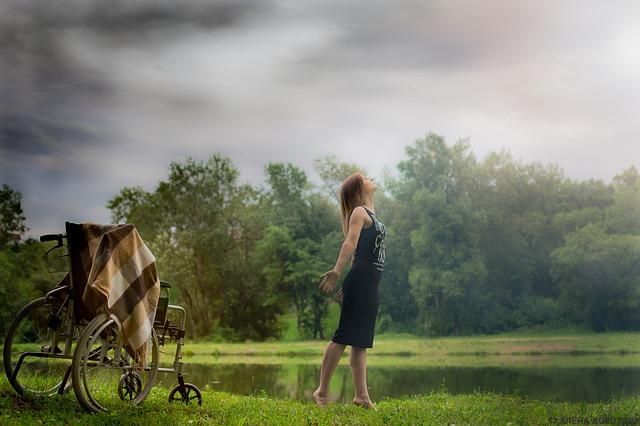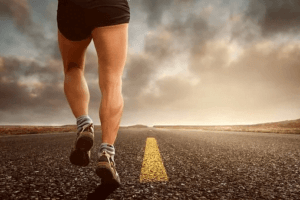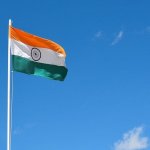We believe in professional growth of Physiotherapists with high technology!
Pune Woman Beats Parkinson’s Disease with New Therapy
When Simple Becomes Impossible
Picture this: You wake up in Pune’s pleasant morning weather. You want to make tea. But your hands won’t stop shaking. Your fingers feel like they’re wrapped in thick bandages.
That was Anushka’s (Name changed) reality every single day.
Buttoning her dress became a 20-minute struggle daily. Chopping vegetables for bhaji? Forget it. Walking to the nearby Ganesha temple that she’d visited for thirty years? Now it felt like climbing Mount Everest.
The worst part? Her sharp mind was slipping away too.
In India, Parkinson’s disease affects approximately 67 out of every 100,000 people¹, with numbers rising rapidly as our population ages. Nearly 0.58 million Indians live with this disease today². Anushka was joining a growing, heartbreaking statistic.
She’d forget her children’s names during their video calls. Lose track of her favorite serial mid-episode. Sometimes she’d stare at the pressure cooker, unable to remember how to use it.
“Arre, what is this?” she muttered, staring at her shaking hand.
But deep in her heart, she knew. Her mother had the same tremor before Parkinson’s took her away.
That was four years ago. Now, at 56, Anushka could barely hold a teacup without spilling it.
“I’m disappearing, Ashish,” she told her husband one evening after struggling to remember their wedding anniversary. “Bit by bit, I’m just… gone.”
The Numbers That Broke Their Hearts
When Anushka finally visited a neurologist in Pune, the test results were devastating.
Her balance test scored 10 out of 56. Normal is 45 or higher. The doctor explained that Anushka was at severe risk of falling. One wrong step could mean broken bones, hospitalization, maybe worse.
The walking test was even more crushing. She scored just 1 out of 24. Think about that. She couldn’t step over a small stone. Couldn’t walk while turning her head. Her body had forgotten the most basic human skill.
Her memory test showed 18 out of 30. Normal is 24 or above. The woman who once managed her family’s finances, who remembered every relative’s birthday, who could recite entire devotional songs – her mind was fading.
Ashish’s Hidden Struggle
Ashish (Name changed), her husband, had become something he never expected: a full-time caregiver.
The stress test showed Ashish scoring 42 out of 88. That’s in the “severe caregiver burden” range. He was drowning, but trying not to show it.
His IT consulting business in Pune’s tech hub suffered. He’d cancelled so many client meetings that his reputation was taking a hit. Their savings were disappearing faster than morning fog in Pune’s hills.
“Sir, your wife needs 24-hour supervision,” the doctor had said. “She cannot be left alone.”
Ashish’s world shrank to the size of their apartment in Kothrud. No more evening walks in Thorat Udyan. No more weekend trips to Lonavala. No more cutting chai at their favorite tapri.
He helped Anushka with everything. Getting dressed. Going to the bathroom. Eating meals. Taking medicines.
At night, he’d lie awake listening to her restless movements, ready to help if she needed to get up. Sleep became a luxury he couldn’t afford.
“I love my wife,” he confided to their family doctor. “But I’m losing myself completely.”
The Day Hope Walked In
Then their family friend mentioned someone special. Dr. Mandar Dharmadhikari, an expert physiotherapist at ARPIT-ProCCD Center For Complex Disorders in Pune.
“He’s doing something revolutionary,” the friend explained. “Quantum Resonance Therapy combined with advanced physiotherapy. I’ve seen remarkable results.”
Ashish was skeptical. They’d tried everything. Medicines, exercises, home remedies their neighbors suggested. Nothing worked.
But what choice did they have?
Meeting Dr. Mandar
Dr. Mandar Dharmadhikari wasn’t like other doctors they’d met. He didn’t just look at Anushka’s test reports. He watched her struggle to walk. Observed her trembling hands. Listened to Ashish’s exhausted voice.
“Anushka, we’re going to try something different,” he said gently. “We’re going to attack this problem from multiple angles.”
He explained the treatment: Quantum Resonance Therapy using something called Celtron technology. It sounded like science fiction.
The first part involved a device called Magnetic Mechanic Oscillator. It would send precise vibrations through her rigid muscles at 8-12 Hz frequency³. Like a gentle earthquake that would shake loose the tightness.
The second part was Pulsed Electromagnetic Field therapy. Invisible electromagnetic waves would stimulate her brain at specific frequencies⁴. Think of it as jumpstarting her damaged brain circuits.
“Doctor, will this really work?” Ashish asked, holding Anushka’s trembling hand.
Dr. Mandar smiled. “Ashish, I won’t promise miracles. But I’ve seen people with similar conditions improve dramatically. Let’s give Anushka the best chance possible.”
The Revolutionary Treatment
The treatment plan was unlike anything they’d seen before.
Twice a week, Anushka would lie face-down on a specialized table at the ARPIT-ProCCD center. The Celtron device would deliver precise mechanical vibrations to her rigid muscles. It felt strange at first – like tiny, gentle earthquakes running through her body.
The electromagnetic therapy was invisible but powerful. Electromagnetic fields pulsed through her brain at carefully calculated frequencies⁵. She couldn’t feel it happening, but her damaged brain circuits were slowly waking up.
Three times a week came traditional physiotherapy. But this wasn’t gentle stretching. This was targeted, aggressive rehabilitation designed specifically for Parkinson’s patients⁶.
Balance training started simple. Standing on one foot for just five seconds. Then ten. Then thirty. Anushka’s brain was relearning how to coordinate her muscles.
Strength training used resistance bands. Her weakened muscles protested at first. But they were remembering their strength.
The most challenging part? Cognitive training while exercising. Walking while counting backwards. Balancing while solving simple math problems. Her brain had to multitask again.
Ashish’s Education
Dr. Mandar didn’t forget about Ashish either. He received two intensive training sessions.
“Ashish, you’re not just a caregiver,” Dr. Mandar explained. “You’re part of Anushka’s healing team.”
He learned proper transfer techniques. How to help Anushka move safely without hurting his own back. How to recognize signs of confusion or agitation. How to encourage without being pushy.
Most importantly, he learned that taking care of himself wasn’t selfish – it was necessary.
Week by Week, One step at a time
The changes started small. After two weeks, Anushka could hold her teacup steadier. After four weeks, she buttoned her own blouse.
But the real breakthrough came in week five.
“Ashish!” she called from the kitchen. “Come see!”
He rushed in, expecting disaster. Instead, he found Anushka standing at the stove, stirring dal with a steady hand.
“I made lunch,” she said, beaming.
It was the first meal she’d cooked in two years.
The Numbers That Brought Tears
After six weeks, they returned for final testing. The results were extraordinary.
Her balance score jumped from 10 to 24 – a 140% improvement. She could stand on one leg again. Walk in a straight line. Navigate around furniture without falling.
The walking test showed even more dramatic results. From 1 to 6 – a 500% improvement. Anushka could step over obstacles. Change directions while walking. Move with confidence again.
Her memory test climbed from 18 to 22 – a 22% improvement. She was remembering names again. Following TV serials. Recognizing neighbors she hadn’t spoken to in months.
But the most important number was Ashish’s stress score. It dropped from 42 to 25 – a 40% reduction. He was sleeping through the night again. Smiling more. Living, not just surviving.
Life Renewed
The changes weren’t just numbers on medical charts. They were real improvements in their daily lives.
Morning routines that once took two hours now took thirty minutes. Anushka could dress herself. Brush her own teeth. Make simple breakfast.
She started her daily walks to the temple again. Slowly at first, with Ashish nearby. Then independently. The elderly priest smiled when he saw her familiar face returning.
Family gatherings became joyful again. Anushka could hold conversations with her grandchildren during video calls. She remembered their school events. Even helped with simple cooking preparations for festivals.
Their quality of life score jumped from 45 to 68 – a 51% improvement. Laughter returned to their home.
Ashish’s Freedom
Most importantly, Ashish got pieces of his life back.
The daily caregiving time dropped from eight grueling hours to five manageable hours. Those three extra hours meant everything. He could meet clients again. Exercise at the local gym. Simply breathe.
“I got my wife back,” Ashish told Dr. Mandar during their final visit, tears of gratitude in his eyes. “And I got myself back too.”
He restarted his consulting business part-time. Their financial stress eased. He even planned a weekend trip to Mahabaleshwar – their first in four years.
The Science Made Simple
The improvements weren’t magic. They were the result of targeting the disease from multiple angles.
The Celtron device’s mechanical vibrations literally broke apart the muscle stiffness that had imprisoned Anushka’s body⁷. At 8-12 Hz, the vibrations matched her body’s natural frequencies – like tuning a musical instrument.

The electromagnetic therapy restored electrical activity in her brain’s damaged circuits⁸. Those precisely timed pulses awakened neural pathways that Parkinson’s had silenced.
Traditional physiotherapy provided the foundation. But Quantum Resonance Therapy provided the breakthrough.
Hope for Millions
Anushka’s story isn’t unique. In India alone, nearly 580,000 people live with Parkinson’s disease⁹. The numbers are growing as our population ages¹⁰.
Current treatments mostly manage symptoms. Medicines help with movement. But they don’t address the deeper mechanical and electrical problems in the body.
This integrated approach – combining cutting-edge technology with proven rehabilitation techniques – offers new hope. It’s available. It’s effective. It works.
A New Chapter
Anushka’s journey continues. Six weeks of intensive treatment gave her years of quality life back. But maintenance matters. She continues physiotherapy twice weekly. Practices home exercises. Stays mentally active.
Her story proves that Parkinson’s disease doesn’t have to be a death sentence. With the right treatment, patients can reclaim their independence. Families can reclaim their happiness.
Last month, Ashish enrolled in a digital marketing course – something he’d wanted to do for years but couldn’t while caregiving consumed his life.
Anushka tends a small kitchen garden again. Just tomatoes and coriander. Nothing elaborate. But those green shoots represent something profound – hope growing where there was once only despair.
The future remains uncertain. Parkinson’s is progressive. But Anushka has won back precious years of quality life. She’s proven that with innovative treatment and expert care, patients don’t have to surrender to their diagnosis.
They can fight back. And sometimes, they can win.
References:
¹ Epidemiology and associated risk factors of Parkinson’s disease among the north Indian population
² Research in Parkinson’s disease in India: A review
³ Short-term effects of vibration therapy on motor impairments in Parkinson’s disease
⁸ Mechanisms and therapeutic applications of electromagnetic therapy in Parkinson’s disease
⁹ Epidemiology and treatment of Parkinson’s disease in India







